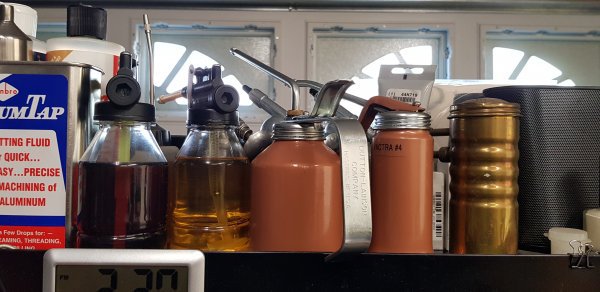I’m getting ready to add ISO32 oil and the go through the break-in procedure for my G4003g lathe. I don’t see anything about removing the top of the headstock housing to examine the inside of the headstock for metal particles and flush them out with mineral spirits after the break-in sequence. Am also considering putting a couple of magnets in to collect metal particles.
Is removing the top of the headstock housing to do this a good idea? Does it have a gasket? Any suggestions?
Also, I’ve been looking for oilers with rubber or plastic nozzles as recommended by Grizzly for the ball-oiler ports. I like the Goldenrod oilers, but they have the small metal tips that Grizzly seems to be warning about. What do you folks do?
Thanks,
Douglas
Is removing the top of the headstock housing to do this a good idea? Does it have a gasket? Any suggestions?
Also, I’ve been looking for oilers with rubber or plastic nozzles as recommended by Grizzly for the ball-oiler ports. I like the Goldenrod oilers, but they have the small metal tips that Grizzly seems to be warning about. What do you folks do?
Thanks,
Douglas



